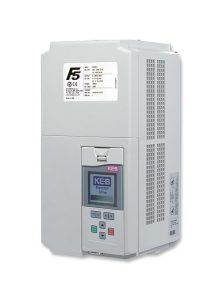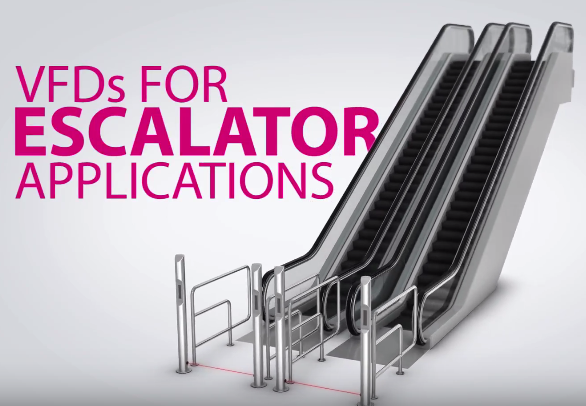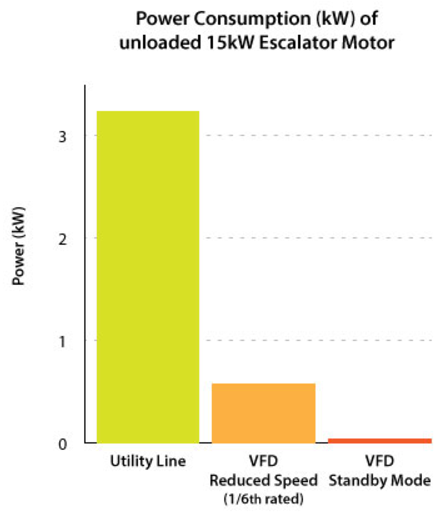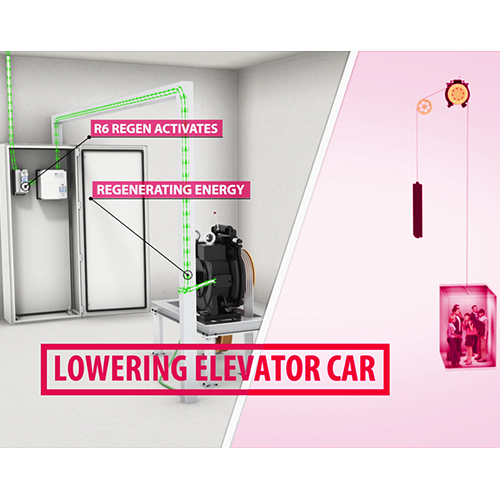This post (2 of 3) describes how using a VFD to control an escalator motor can reduce energy consumption compared to conventional line start control.
- The first post in this series described how using a drive to control an escalator can provide operation and performance advantages.
- The third post shows the energy savings that can be achieved with an R6 line regenerative drive.
The benefits from operating an escalator motor with a VFD generally come in two forms: 1) operational or performance advantages and 2) energy savings. KEB has created these posts to help customers, consultants, and users understand the benefits of applying KEB’s energy saving accessories to their escalator VFD.
Reduced Speed Operation and Standby Mode can create energy savings in your escalator VFD
Depending on the installation and usage profile, some escalators can operate unloaded for long periods of time. During periods of inactivity, it is possible to reduce the speed of the escalator motor with a KEB drive in order to save energy.
A typical implementation has the PLC or VFD actively monitoring escalator usage. After the escalator has been unused for a defined period of time (e.g. 5 or 10 minutes), the KEB VFD reduces the speed of the escalator motor – for example, to 20% of rated contract speed.
The VFD continues to operate in Reduced Speed Mode until the escalator is needed. When a passenger approaches the escalator they trip an input (e.g. light curtain or pressure mat) to the controller and the VFD smoothly ramps the motor up to contract speed.
Taking the concept of reduced speed operation even further, it is possible to completely stop the escalator motor during periods of inactivity. In this scenario, there is no current output to the motor and, therefore, no associated motor losses. The only motor/controller losses are due to the control electronics which are minimal.
Figure 1 below shows the typical energy usage of an unloaded 15kW squirrel cage induction motor in various control modes. The largest incremental savings results from using a VFD to operate the motor at a reduced speed during periods of inactivity. Based on the measured savings from a 15kW motor, Table 1 shows the estimated annual energy savings a user could expect when using a KEB VFD to reduce escalator speed.
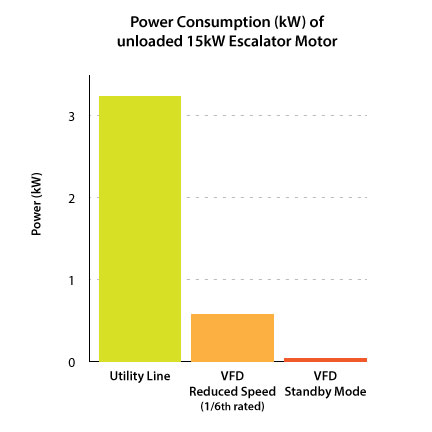
Reduced speed operation has a secondary benefit. Lower operating speeds will increase the lifetime of the mechanical wear components on the escalator like bearings and chains.
Table 1
Estimated Annual Energy Savings using Reduced Speed Operation
– Data based on a 15kW induction motor –
| Hours/Day at Reduced Speed |
| Hours/Year* | | Annual Savings** |
|---|---|---|
| 2 | 730 | $73 |
| 4 | 1,460 | $146 |
| 8 | 2,920 | $292 |
*Assume 365 days of operation
**Assume energy cost of $0.10/kWHr
This additional cost savings comes in two forms: fewer replacement parts and less labor costs.
One thing to note is that local governing escalator code might not allow for the escalators to operate at reduced speeds or to be placed into Standby Mode. If the code does allow for these operating modes, the escalator passengers still might need to be educated that they need to approach the escalator before it ramps up to normal contract speed.
Power Factor Improvement
Power Factor (PF) is a unitless number that represents the ratio between the power being put into useful work (measured in Watts) and the total electrical power being transferred (measured in Volt-Amps). A unity PF of 1.00 is ideal and indicates that all power being delivered is being usefully consumed by the escalator motor.
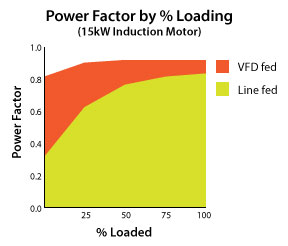
A low power factor will result in a higher input current for a given amount of power output at the motor shaft. This higher input current is to be avoided because it requires electrical components to be oversized in order to accommodate the transfer the unused reactive power. Also, there will be more resistive conductor losses due to the transfer of the additional reactive power. Finally, a low power factor will cause higher heating in electrical components which will negatively affect the operating lifetime of the components.
Using a VFD dramatically improves the power factor of an induction motor compared to a motor that is being operated from the utility line. Figure 2 shows the difference in PF between an induction motor that is operated by a VFD and one that is line fed. The positive effects on the PF are most noticeable when the motor is partially loaded – a scenario common in many escalator applications. However, even when the motor is at full load the PF is improved by 10% when using a KEB VFD.
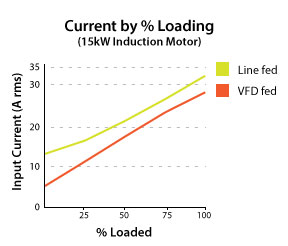
VFD effects on Input Current
As described previously, the input current is related to the PF. A low PF will result in a higher input current for a given output power. Figure 3 shows the effect of a VFD on the escalator system’s input current.
Again, a VFD provides the largest benefit when the escalator motor is operated at partial load. In this case, the no load RMS current with a VFD is over 50% lower than the case of the line fed motor.
Do you want to discuss the benefits of using KEB VFDs with your escalators? Contact an application engineer today!
Let's Work Together
Connect with us today to learn more about our industrial automation solutions—and how to commission them for your application.
